
Shaku Nair, Dawn H. Gouge, Shujuan Li
Department of Entomology, University of Arizona

Figure 1: Aggregations of red and black bugs (Photo: Claudia Hake).
Late summer in the desert southwest, especially after a few rains, is often accompanied by large numbers of “red and black bugs” (Figures 1 and 2). Many of these are plant feeders and pose no threat to humans or animals. However, residents and maintenance staff are often concerned by the sheer numbers of these insects and sometimes resort to pesticide treatments. Are these bugs all the same? This newsletter will look at some of these “red and black bug invasions” and discuss what we can do about them.
A large number of true bugs (Order Hemiptera) belonging to different families are referred to as “seed bugs”. They are found in and around landscapes that have a lot of seed-producing trees and shrubs. Many of these feed on seeds or seed pods of various plants, while some feed on plant sap. They are mostly elongate in shape, with black bodies and have various types of red or orange markings on their wings. The nymphs or young ones of most of these bugs are also patterned with different combinations of red and black. Aggregations can range from a few to thousands in number (Figure 2).

Figure 2: Aggregations of bugs, left - outside a home entrance (Photo: Melinda Fawver) and right - on exterior walls (Photo: Melissa MN).
They usually appear in large groups after an especially hot summer, when their food sources dry up and they have to move in search of other sources. During these times, they are attracted to lights at night, and can be found in large numbers on patios, porches, around window frames and near landscape lights. Many of them will enter homes and buildings through gaps or cracks, and through open doors or windows. In the fall, they congregate again, while seeking favorable spots to overwinter. Very often they cluster near homes and buildings, and enter through open doors or windows.
Seed bugs are not considered serious pests, but can occasionally cause scarring, fruit deformation and premature fruit drop in some plants. They are harmless to humans, but large clusters of the bugs in or around homes, and staining of surfaces with their feces can be problematic. Some of the common species encountered are briefly described below.
Scentless plant bugs, Family Rhopalidae
The most common of these bugs are the boxelder bugs, Boisea spp. Named after their preferred hosts – boxelder trees, these bugs are frequently seen in large numbers after a very hot summer. The adults are medium sized bugs, about 0.5 inch in length, with a black or dark brown body. The wings have red markings along the inner margins, and there is a single red vertical stripe on the prothorax. They feed on boxelder, as well as maple, ash, soapberry, goldenrain, and many other trees and suck sap from the seeds, leaves and other plant parts. The western boxelder bug Boisea rubrolineata is the more common species encountered in the western U.S. The closely related eastern boxelder bug B. trivittata has also been reported from different parts of the southwest. The two species are almost identical in appearance, except that the veins on the wings are more prominent and red in color in B. rubrolineata (Figure 3).
A similar-looking bug is the red-shouldered bug, Jadera haematoloma. Also known as soapberry bugs, these insects are very similar in size and appearance to boxelder bugs. Adults are usually black or bluish black, and can be distinguished by the two red stripes along the sides of the prothorax (as opposed to the single middle stripe in boxelder bugs). They are widely distributed all over the U.S. and soapberry trees are their preferred food source. For more information, read https://ipm.ucanr.edu/PMG/L/I-HM-LTRI-AD.003.html.
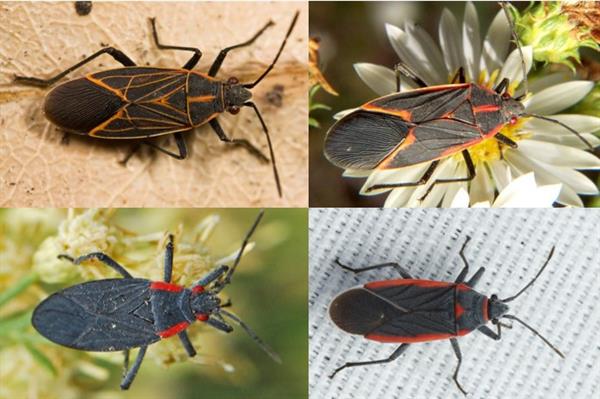
Figure 3: Top left: Adult western boxelder bug (Photo: Ken-ichi Ueda); top right: eastern boxelder bug (Photo: Bruce Marlin); bottom left: red-shouldered bug (Photo: Jerry Oldenettel); bottom right: charcoal seed bug (Photo: Tony Iwane).
Boxelder and red-shouldered bugs are most often confused with Melacoryphus lateralis (black and red seed bug, or charcoal seed bug), which belongs to the family Lygaeidae. These are similar in habits and habitat and can be distinguished by a triangular red mark on the prothorax, as opposed to the red stripe on the prothorax, found in boxelder bug adults.
Ground bugs or seed bugs, Family Lygaeidae
Lygaeus is a genus of seed bugs in the family Lygaeidae (Not to be confused with Lygus bugs). A common species is Lygaeus kalmii kalmii (western small milkweed bug or common milkweed bug) (Figure 4). These colorful bugs occur in all kinds of vegetation, with milkweed seeds being their preferred food. The adults are orange to red and gray/black, measuring about 0.5 inch in length. The head is black with a red spot in the center. The forewings are patterned with a black heart inside of an orange-red “X” which does not meet in the middle. The membranous portion of the forewings has white spots and a broad margin.
The large milkweed bug, Oncopeltus fasciatus is another common species. The adults have a prominent red and black “X” shaped pattern on their back (Figure 4).
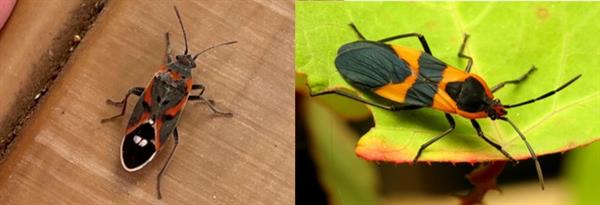
Figure 4: Left: Adult western small milkweed bug (Photo: Jennifer Miller); Right: Adult large milkweed bug (Photo: Katja Schulz).
Lygus bugs are bugs that belong to the genus Lygus, in the family Miridae. Some of them are important crop pests (e.g., tarnished plant bug Lygus lineolaris). They are much smaller than seed bugs, differently colored and the adults measure about ¼ inch in length (Figure 5).

Figure 5: Adult tarnished plant bug (Photo: Jake Batters).
Bordered plant bugs, Family Largidae
These bugs are named for the colorful contrasting edges to their wings, that give them a bordered look. They are common in low vegetation. A common species is Largus succinctus (Figure 6), which can be identified by the orange or red margin all around the elytra and across the base of the prothorax.
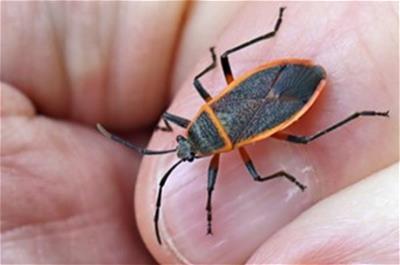
Figure 6: Adult Eastern bordered plant bug (Photo: Dennis White).
Red bugs or cotton stainers, Family Pyrrhocoridae
As their name suggests, many species of these striking bugs have bright red and black patterns. Some species stain cotton bolls due to their feeding and are considered pests.
The Mediterranean red bug Scantius aegyptius (Figure 7), is an invasive species recently introduced to the U.S. The head, antennae and legs in the adults are black, and their red back has two round black spots.

Figure 7: Adult Mediterranean red bug (Photo: Simon Oliver).
Red firebugs Pyrrhocoris apterus (Figure 8) are another species that display interesting mating behavior. During mating, they can be seen attached for long periods of time (12 hours to 7 days).
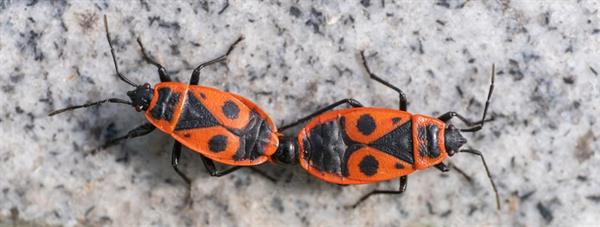
Figure 8: Red firebugs mating (Photo: Andy Birkey).
Assassin bugs, Family Reduviidae
Assassin bugs are mostly beneficial and many of them prey on other arthropods. The milkweed assassin bug Zelus longipes (Figure 9) is easily identified by its distinctive red and black patterns and long black legs.

Figure 9: Milkweed assassin bug (Photo: Mary Keim).
Some assassin bugs are blood-sucking parasites, and the most common examples are kissing bugs or conenose bugs. Kissing bugs are large, dark brown or black bugs, and some species (Triatoma rubida) (Figure 10) have red and black patterns and markings on their backs. Kissing bugs are typically larger than seed bugs, and they range in size from 0.5 to over 1 inch in length. For more information on kissing bugs, read https://extension.arizona.edu/sites/extension.arizona.edu/files/pubs/az1992-2022.pdf.
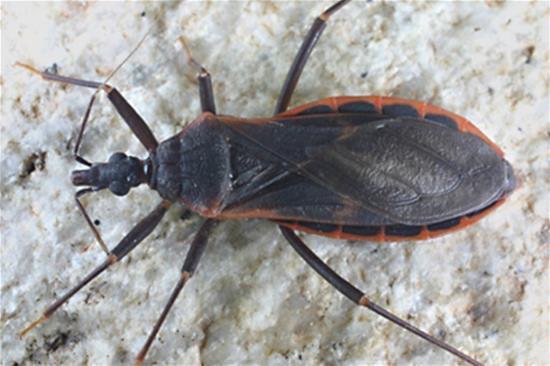
Figure 10: Adult kissing bug, Triatoma rubida (Photo: Jillian Savary).
Not true bugs
There are many other red and black colored insects that may be found in community environments during the same time as the bugs described above. However, not all of them may be harmless.
Blister beetles, Family Meloidae are named after their defensive secretion (cantharidin), that cause blisters on the skin of predators or intruders. The desert or master blister beetle, Lytta magister (Figure 11) is a common species.
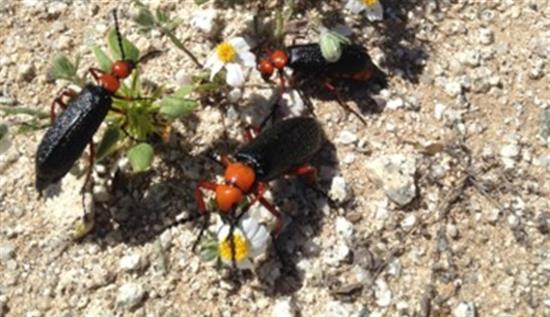
Figure 11: Adult desert blister beetles (Photo: Stephanie Calloway).
Velvet ants, Family Mutillidae are wasps that resemble large, hairy ants. The females are wingless and can be found running around on the ground. Some species are red and black in color (e.g., Dasymutilla magnifica, Figure 12), but other color combinations also exist. They look harmless, soft and furry, but can deliver extremely painful stings if handled.

Figure 12: Adult female velvet ant (Photo: Cindy Howland-Hodson).
Woolly bear caterpillars, also known as woolly worms or woolly bears, are actually the larvae of the Isabella tiger moth (Pyrrharctia isabella) (Figure 13). In the fall, these caterpillars start their annual crawls in search of sheltered quarters for winter. This is usually the time that you may see noticeable numbers of these caterpillars crossing roads. These caterpillars have alarm-orange bands on their back and short stiff hairs throughout the body. Some think that these sharp-pointed bristles may harm people or pets. In fact, these bristles/hairs serve as a defense against many types of predators and protect the caterpillars. They are not stinging hairs and don’t inject venom. However, hypersensitive individuals may suffer severe reactions if the hairs penetrate their skin.

Figure 13. Woolly bear caterpillar (Photo: University of Missouri).
Management of bug “invasions”
Credit: Dion Lerman, Pennsylvania Integrated Pest Management (PA IPM) Program
In our August newsletter, we included a picture of a plastic “locking device” that could be used to secure cabinets. This was merely meant to illustrate that chemicals must be kept in a locked cabinet.

Store pesticides in locked cabinets. Photo: Consumer Product Safety Commission.
However, it is important to note that some of these devices are fragile and not entirely dependable. Some of these types of designs (shown in the picture), with plastic teeth are easily broken and pulling on the double doors can easily cause the teeth to slip or break. More effective designs can sometimes be so difficult to install that adults simply stop using them. For example, a double loop device with a sliding clamp lock that slips over cabinet knobs is often abandoned and left hanging from one loop.
In many cases, public and other affordable housing does not have hardware on cabinet doors, so these types of devices are not usable. Many other types, such as hooks that mount inside cabinet doors, also usually have short, small screws to mount them. These offer very little resistance to being ripped out if a toddler were to pull on them, perhaps falling backward while pulling.
As with all injury prevention programs, it is also crucial to INSTALL these devices, not merely give them to clients. Many clients do not possess screwdrivers, drills or other equipment needed for install.
Finally, toxics should ALWAYS be stored at least 4’ high in locked cabinets. Base cabinets – especially under-the-sink – should never be used for toxic storage.
We are grateful to Dion for these inputs!
For more information on school IPM read: https://www.epa.gov/schools

The Border Tick and Rickettsia Surveillance (BiTeRS) program of the Pacific Southwest Center of Excellence in Vector-Borne Diseases (PacVec) offers services to enhance surveillance for ticks and tick-borne pathogens of human health concern in California and Arizona. This is made possible through our project leaders at the University of California, Davis, the University of Arizona, and collaborating local and state agencies, including the California Department of Public Health and the Arizona Department of Health Services.
We help every step of the way, and identification and pathogen testing are FREE. Collection supplies and protocols are provided, and partners receive all results on ticks they have submitted.
We work with partner organizations to:Partner organizations may be:
Download the BiTeRS Flyer for distribution: https://pacvec.us/biters/

What do you think about our newsletter? Please take this short 4-question survey:
https://uarizona.co1.qualtrics.com/jfe/form/SV_cMhZ82JodDKJgCa

What does this symbol mean on a pesticide label?
Answer: The skull and crossbones symbol and the word “Poison” identify pesticide products that are determined to be in Toxicity Category I based on at least one of the following acute toxicity studies: acute oral, acute dermal, or acute inhalation. They are also required if methanol is present at 4 percent or more.
Congratulations to Master Pest Detectives
Al Brown, Arizona State University; Mark Lesher, U.S. EPA Region 7;
Karen Austermiller, Yavapai County Master Gardener; William Carley

Identify this red and black butterfly.
If you know the answer, email Dawn at dhgouge@arizona.edu. You will not win anything if you are correct, but you will be listed as a “Master Pest Detective” in the next newsletter issue.
IPM with Diego: New UC IPM YouTube Series
Check out UC IPM's new YouTube series IPM with Diego! These short videos are presented from the viewpoint of Diego, a teenager who is not an expert in pest management. However, he explains basic integrated pest management concepts using simple terms and examples that anyone can do. View the playlist on YouTube at:
https://www.youtube.com/playlist?list=PLo3rG4iqv4gFbkbqphLFuN65_LW_Z0DQZ

Upcoming Events
Dates Confirmed! Pest Management and Pesticide Safety Seminars for Turf and Landscapes, organized by the UA Turfgrass Science Program.
Tuesday, November 28th at Ocotillo Golf Club Pavilion, 3751 S. Clubhouse Drive, Chandler AZ 85248
Wednesday, November 29th at Lecture Hall, Recreation Centers of Sun City West, 19803 R.H. Johnson Blvd, Sun City West, AZ 85375
Both events will feature the same content, with presentations by experts on various aspects of turf and landscape pest management and pesticide safety. Six AZ Dept. of Ag. ESD (Ag.), PMD (OPM) and GCSAA CEUs will be applied for. For more information, please contact Shaku Nair at nairs@arizona.edu. Registration information is available here: https://tinyurl.com/yeyj7mx7
__________________________________________________
What’s Bugging You? First Friday Events (New York State IPM Program)
Fridays | 12:00 pm. – 12:30 p.m. EDT | Zoom | Free; registration required.
In this monthly virtual series, we explore timely topics to help you use integrated pest management (IPM) to avoid pest problems and promote a healthy environment where you live, work, learn and play. What is IPM? It's a wholistic approach that uses different tools and practices to not only reduce pest problems, but to also address the reasons why pests are there in the first place. Each month, our speakers will share practical information about how you can use IPM. Register for upcoming events.
What’s Bugging You First Friday events are in Spanish this year. Individuals interested in these events can find more information on this website: https://cals.cornell.edu/new-york-state-integrated-pest-management/outreach-education/events/whats-bugging-you-webinars/conozca-su-plaga
__________________________________________________
Urban and Community IPM Webinars University of California
UC Statewide IPM Program Urban and Community webinar series is held the third Thursday of every month to teach about pest identification, prevention and management around the home and garden. This series is free but advanced registration is required. Dates and topics below, all begin at noon Pacific. https://ucanr.edu/sites/ucipm-community-webinars/
__________________________________________________
Upcoming webinar offering AZ CEUs: Preventing Overwintering Pests in Buildings. October 24, 2023 (11:00 AM – 12:30 PM MST, Arizona). As temperatures start to cool, opportunistic vertebrate pests, such as squirrels, mice, rats, racoons, bats, birds, and skunks will seek shelter from the impending cold weather. As they set their sights on homes, schools, and other buildings, these pests gain entry through cracks and crevices in foundations, around windows, or through holes chewed in trim. Join this free webinar to learn how to prevent these fall invaders and how these pests can pose health risks if they enter buildings.
Register at https://register.gotowebinar.com/register/5214082484988104538
View recordings of archived EPA Integrated Pest Management Webinars at https://www.epa.gov/managing-pests-schools/upcoming-integrated-pest-management-webinars.
For more information about the EPA Schools program: http://www.epa.gov/schools/.
To view previous University of Arizona newsletters, visit: https://acis.cals.arizona.edu/community-ipm/home-and-school-ipm-newsletters.
Acknowledgements
This material is in part funded by the National Institute of Food and Agriculture, U.S. Department of Agriculture, under award number 2021-70006-35385 that provides Extension IPM funding to the University of Arizona. It is funded in part by the USDA National Institute of Food and Agriculture through the Western Integrated Pest Management Center, grant number 2018-70006-28881. Additional support is provided by the UA Arizona Pest Management Center and Department of Entomology. Any opinions, findings, conclusions, or recommendations expressed in this publication are those of the authors and do not necessarily reflect the views of the U.S. Department of Agriculture or those of other funders.
We respectfully acknowledge the University of Arizona is on the land and territories of Indigenous peoples. Today, Arizona is home to 22 federally recognized tribes, with Tucson being home to the O’odham and the Yaqui. Committed to diversity and inclusion, the University strives to build sustainable relationships with sovereign Native Nations and Indigenous communities through education offerings, partnerships, and community service.